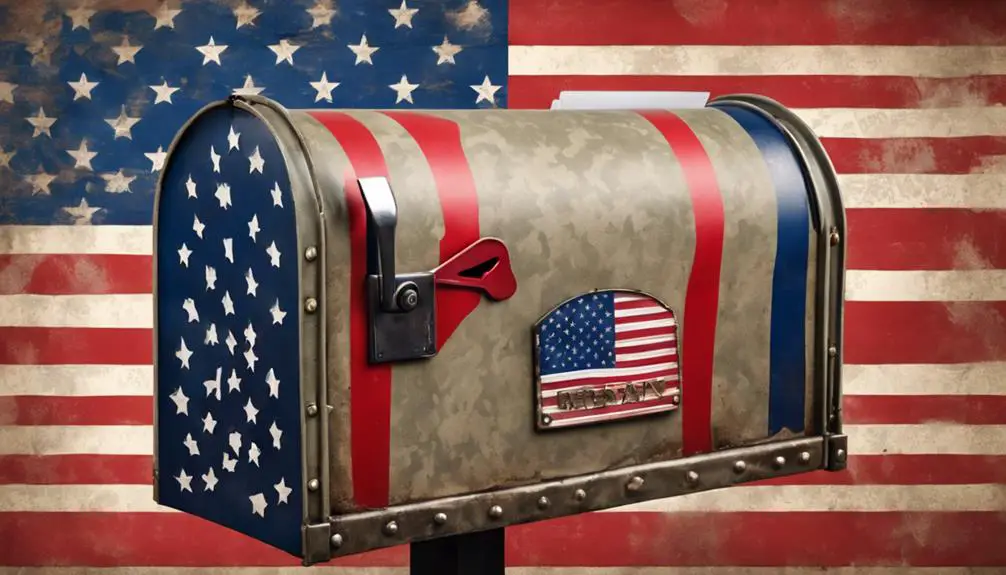You're likely familiar with the excitement of mail call during deployment, where a simple letter or care package can be a much-needed morale boost. In the military, mail is referred to as "mail call" or "surface mail," depending on the delivery route. Care packages are a cherished way to stay connected with loved ones back home. Whether you're the sender or receiver, mail can bring a sense of comfort and connection in isolated environments. As you explore the world of military mail, you'll uncover the nuances of mail call lingo, care package etiquette, and more – and discover the significance of mail in the lives of service members.
Mail Call Lingo 101
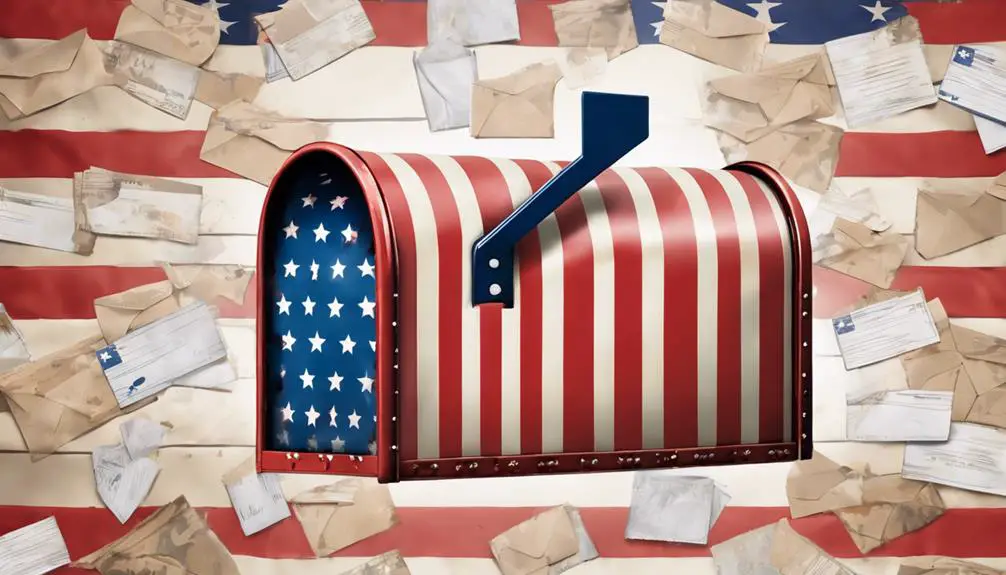
When you're deployed, hearing the phrase 'mail call' can be a highlight of your day, as it means you'll soon be receiving letters or care packages from loved ones back home. It's a moment of excitement and anticipation, especially when you're thousands of miles away from family and friends. In the military, mail call is more than just a routine task – it's an event that brings crucial news from home.
In the mailroom, gossip spreads quickly about who's getting the most mail or who's receiving the most care packages. It's not uncommon to hear whispers about who's getting the most attention from back home. This mailroom gossip might seem trivial, but it's a small comfort in a foreign land. Amidst the chatter, postal pride takes center stage. Mail handlers take pride in their work, ensuring that every piece of mail reaches its destination safely and efficiently. It's an essential lifeline to the outside world, and they're the unsung heroes who make it happen.
Care Packages Demystified
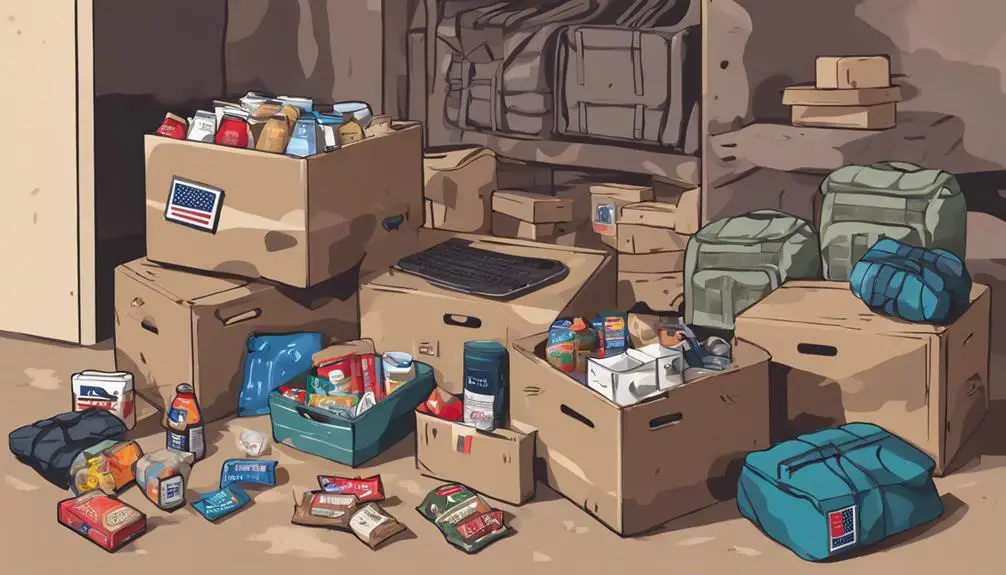
As you anxiously await the arrival of mail call, you're probably wondering what treasures await you in those care packages from loved ones back home. Care packages are a morale booster, and their contents can greatly impact your deployment experience. However, have you ever stopped to think about the sender's perspective? Sender anxiety is a real concern, as loved ones worry about what to include, how often to send packages, and whether their efforts will be appreciated.
Understanding care package etiquette can alleviate some of this anxiety. When sending a care package, consider including a personalized note or card to make it more personal. It's also essential to check with your unit's mail handler for any specific guidelines or restrictions on package contents. By taking these details into account, you can make sure that your care package is both a welcome surprise and a thoughtful gesture. By doing so, you'll not only bring a smile to your loved one's face but also provide a sense of comfort and connection during their time away from home.
The Lowdown on Surfacing Mail
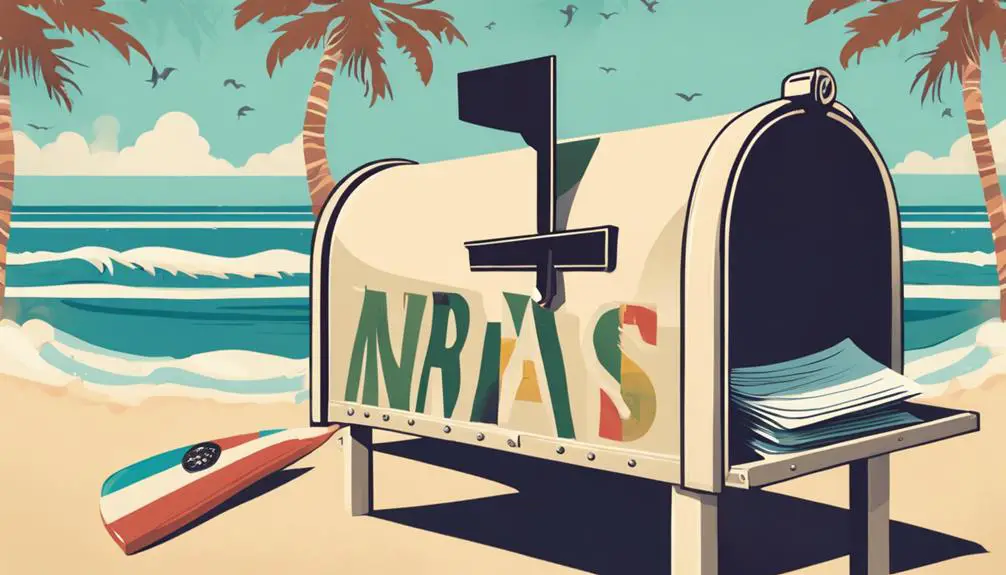
You're likely familiar with the term 'surfacing mail,' but do you know what it actually means and how it differs from other types of military mail? Essentially, surfacing mail refers to mail that's sent to a military member's permanent address, rather than an APO (Army Post Office) or FPO (Fleet Post Office) address. This type of mail is processed through postal protocols, just like civilian mail, and is typically used for packages and letters that aren't time-sensitive.
The main difference between surfacing mail and other types of military mail lies in the delivery process. While mail sent to an APO or FPO address is expedited and prioritized, surfacing mail is treated like regular civilian mail, following standard postal protocols. This means it may take longer to arrive, but it's still a reliable way to send non-urgent mail to military personnel. Unraveling Mailroom mysteries, surfacing mail is an important option for loved ones and friends who want to stay in touch with service members.
Mail Drops in Combat Zones
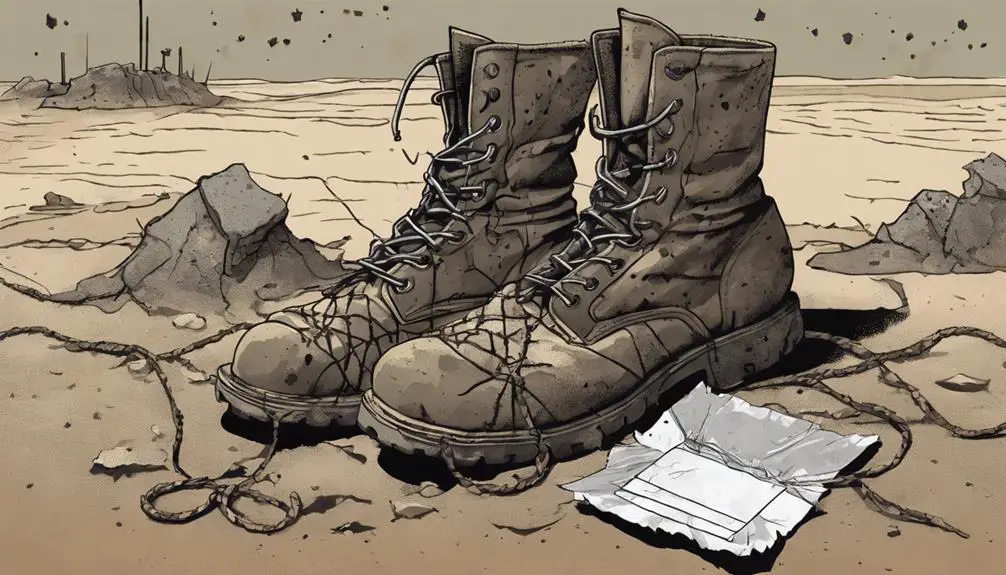
In combat zones, mail drops, an essential morale booster, become a lifeline, connecting service members with loved ones and friends back home. You may have heard that mail drops are a rare occurrence in combat zones, but that's far from the truth. Mail convoys regularly transport mail to remote outposts, bringing a taste of home to service members stationed in harsh environments.
As you can imagine, receiving mail in a combat zone is a significant event. Mail call is a time for celebration, and service members often gather around, enthusiastic to hear news from home. In these isolated areas, mail drops are a crucial link to the outside world, providing a much-needed distraction from the dangers and stresses of combat.
Despite the challenges of delivering mail in hostile territories, mail convoys brave treacherous roads and uncertain weather conditions to bring a piece of home to those serving abroad. As a result, mail drops become a cherished ritual, fostering a sense of connection and community among service members in combat zones.
The Art of Writing V-Mail
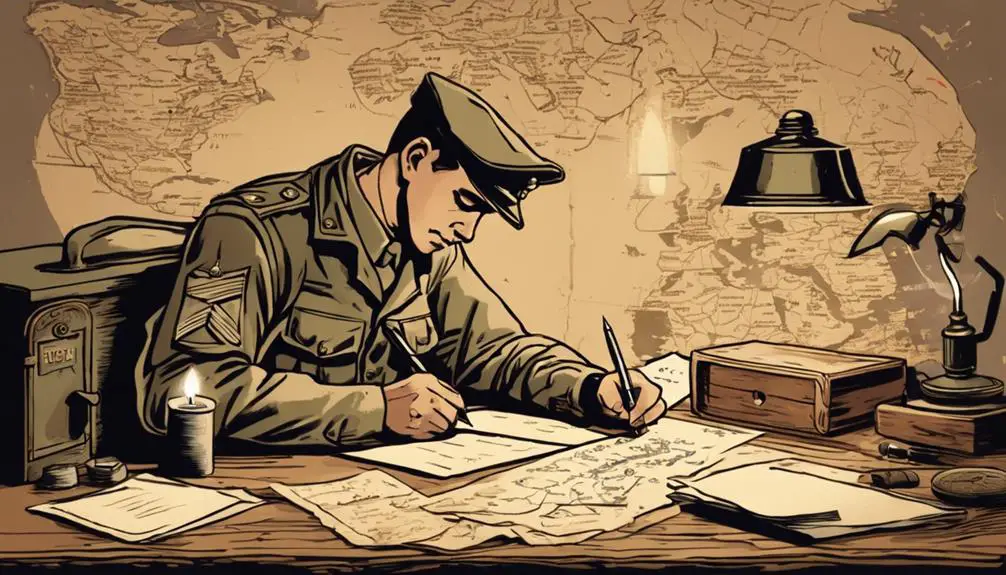
During World War II, the U.S. military introduced V-Mail, a microfilmed mail process that allowed service members to send and receive letters more efficiently, facilitating communication with loved ones back home. As you sit down to write a V-Mail, remember that the goal is to convey your thoughts and emotions in a concise yet meaningful way. Effective letter writing requires you to be intentional with your words, using the limited space to express your feelings and thoughts.
When writing a V-Mail, focus on expressing your emotions honestly and sincerely. Share your experiences, thoughts, and feelings with your loved ones, and don't be afraid to be vulnerable. Your words have the power to comfort, inspire, and uplift those waiting to hear from you. Keep your writing clear, concise, and heartfelt, and your V-Mail will become a treasured keepsake for years to come. By mastering the art of V-Mail, you'll be able to bridge the distance between you and your loved ones, fostering a sense of connection and community even in the most challenging times.
Mailroom Insider Secrets
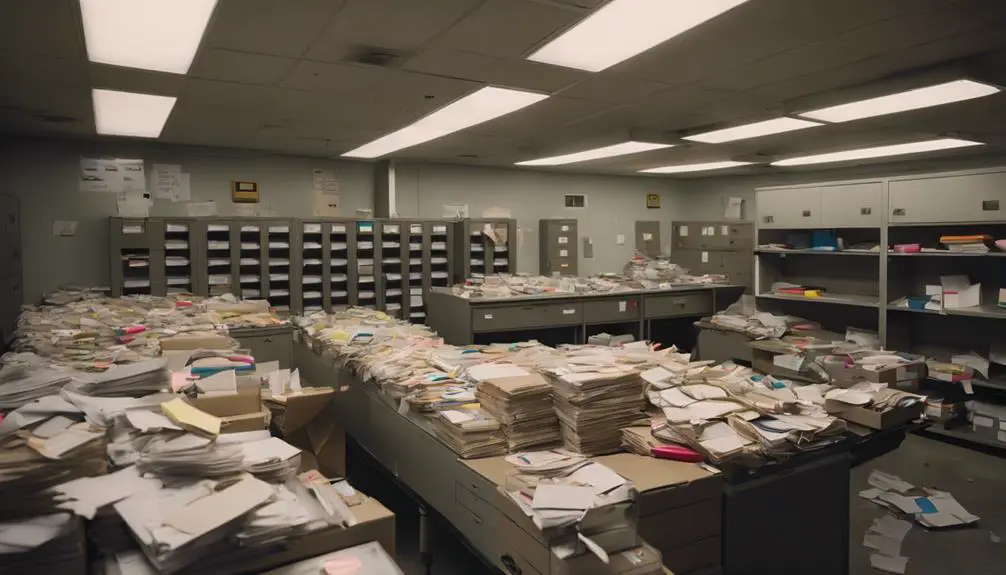
Behind the scenes of military mail operations, specially trained personnel worked tirelessly to make sure that V-Mail and other correspondence reached their destinations efficiently. You might think that mailroom operations are straightforward, but there's more to it than meets the eye. As you explore further, you'll discover that mailroom gossip and postal politics play a significant role in the inner workings of military mail.
As a mailroom insider, you'll learn that gossip spreads quickly, and rumors can affect morale. You'll need to navigate through the grapevine to separate fact from fiction. Postal politics, on the other hand, can be a delicate matter. You'll need to build relationships with colleagues and superiors to ensure that mail is processed efficiently. You'll soon realize that who you know can make a difference in getting your mail delivered on time.
In this environment, it's important to stay focused and maintain confidentiality. You'll be privy to sensitive information, and discretion is critical. As you navigate the intricacies of military mail operations, remember that your role plays a key part in keeping the lines of communication open between service members and their loved ones.
Decoding Military Postal Codes
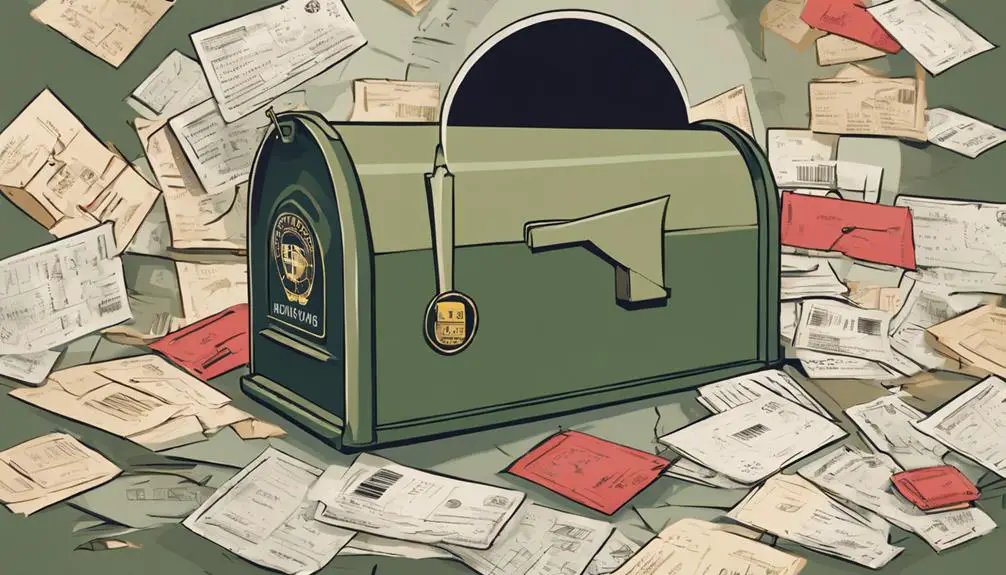
Familiarizing yourself with military postal codes is important, as you'll need to decipher them to guarantee timely delivery of mail to service members and their units. Understanding these codes guarantees that mail reaches its intended recipient efficiently, even when they're deployed or stationed abroad.
Military addresses differ greatly from civilian ones, and it's crucial to grasp the unique postal protocols involved. You'll encounter various codes, such as the APO (Army Post Office) and FPO (Fleet Post Office) designations, which indicate the mail's destination. Additionally, you'll need to include the unit number, box number, and country, if applicable.
When addressing mail to military personnel, accuracy is key. A single mistake can cause delays or misdirection, so it's important to double-check every detail. By mastering military postal codes, you'll ensure that your mail reaches its intended recipient quickly and efficiently, providing a vital link between service members and their loved ones.
Snail Mail in the Digital Age
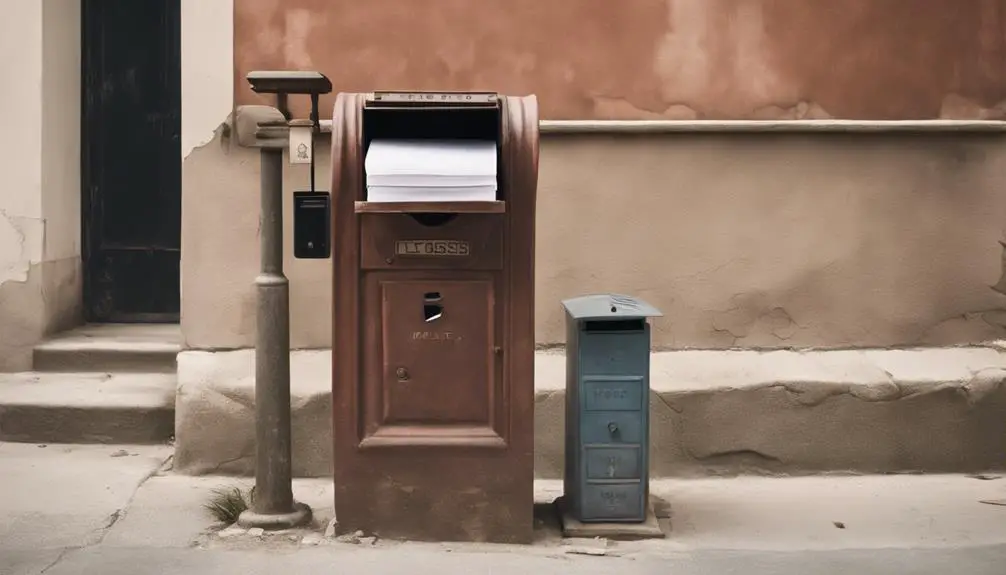
In today's digital landscape, where instant messaging and social media reign supreme, traditional mail, affectionately dubbed 'snail mail,' still holds a special significance for service members stationed abroad, serving as a tangible link to loved ones back home. You might think that digital alternatives would render physical mail obsolete, but for those serving overseas, there's something uniquely comforting about receiving a handwritten letter or care package. The physical act of holding a tangible piece of mail, adorned with handwritten notes and personal touches, evokes a sense of physical nostalgia that digital communication can't replicate. While digital alternatives offer convenience and speed, they can't replace the emotional connection fostered by physical mail. For service members, snail mail serves as a reminder that they're not forgotten, and that loved ones are thinking of them. As you navigate the complexities of military life, the humble letter or care package can be a powerful morale-booster, offering a sense of comfort and connection in an uncertain environment.
Mail Forwarding Frustrations
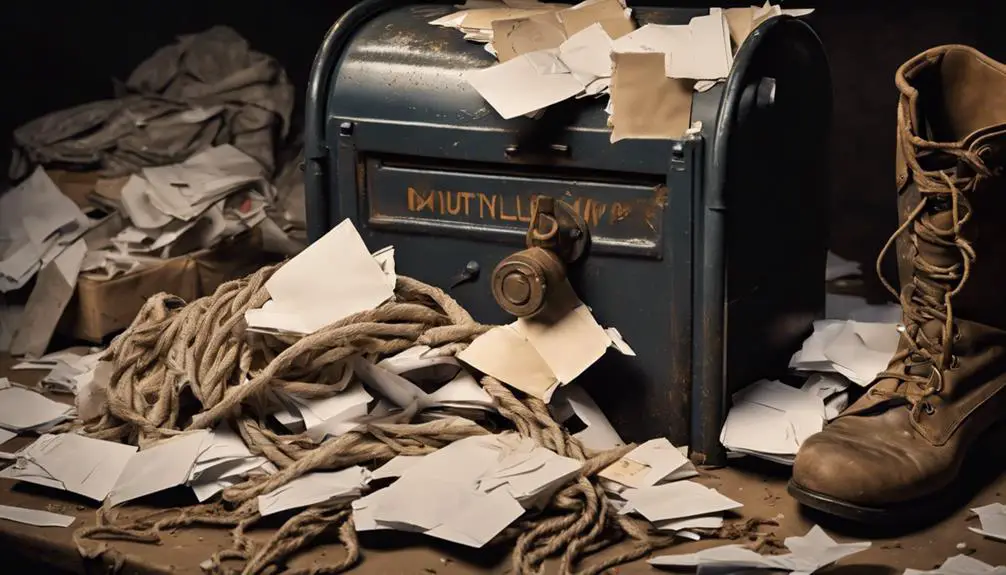
During deployments, you've likely experienced the frustration of waiting for weeks or even months for your mail to catch up with you, only to find that it's still stuck in transit. This can be especially frustrating when important packages, such as care packages from loved ones or essential supplies, are lost in the mail.
Lost packages are a common occurrence when relying on unreliable carriers. You've probably experienced the disappointment of never receiving a package or receiving it weeks after it was sent. This can be especially challenging when you're deployed in a remote area with limited access to essential items.
Unreliable carriers can make an already stressful situation even more frustrating. You're not just waiting for mail, you're waiting for a connection to home, a reminder that you're not forgotten. When mail doesn't arrive, it can feel like you're disconnected from the world. The anxiety and uncertainty of waiting for mail can be overwhelming, and it's crucial to find a reliable solution to make sure you receive the mail you need to stay connected.
Mail Security Protocols Explained
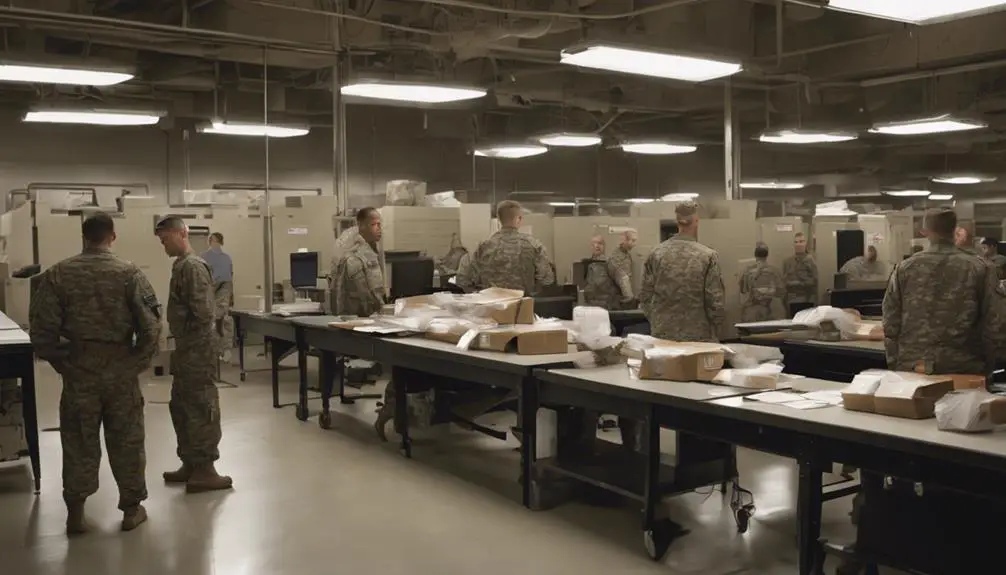
As you depend on mail to stay connected with loved ones and receive essential supplies, it's comforting to know that military mail security protocols are in place to safeguard your packages from loss or tampering. These measures are designed to guarantee the secure delivery of mail to military personnel and their families. In the mailroom, strict protocols are followed to sort, process, and dispatch mail efficiently and securely. Mailroom personnel are trained to handle mail with care, and random postal inspections are conducted to ensure compliance with security regulations. Additionally, mail is screened for suspicious activity, and any anomalies are reported to the authorities. You can rest assured that your mail is being handled with utmost care and security. The military takes mail security seriously, and you can have confidence that your packages are in good hands. With these protocols in place, you can focus on staying connected with loved ones, knowing that your mail is protected every step of the way.
Frequently Asked Questions
Can I Send Care Packages to Military Personnel Without Knowing Them?
You can send care packages to military personnel without knowing them through programs like Adopt a Unit or by becoming a Military Pen Pal. These initiatives connect civilians with deployed troops, allowing you to show appreciation for their service. Research organizations, like Soldiers' Angels or Operation Gratitude, which facilitate care package delivery. Make sure you follow their guidelines and any military regulations to guarantee your package reaches its destination safely.
Are There Size or Weight Restrictions for Mail Sent to Combat Zones?
When sending mail to combat zones, you should be mindful of size and weight restrictions. Postal regulations dictate specific guidelines for mail classification, guaranteeing timely and efficient delivery. Check with the USPS for exact dimensions and weight limits, as they vary depending on the destination. Confirm your package complies with these regulations to avoid delays or returns.
Can I Track My Mail Package Once It's Sent to a Military Address?
You're probably used to tracking your packages with ease, but what about when you're sending mail to a military address? The good news is that you can still track your package. Consider using mail forwarding services that specialize in military addresses, which often provide tracking information. Additionally, consider purchasing package insurance options to make sure you're protected in case your package doesn't arrive.
Are Mail Delivery Times Slower During Peak Holiday Seasons?
During peak holiday seasons, you can expect mail delivery times to slow down due to increased volumes and mailroom chaos. Holiday schedules often lead to delays, as postal services struggle to keep up with the surge in packages. With more people sending gifts and cards, it's not uncommon for delivery times to stretch beyond the usual estimates.
Can I Send Electronics or Batteries in Care Packages to Military Personnel?
As you prepare a care package for a military personnel, you coincidentally wonder what items are allowed. When it comes to sending electronics or batteries, exercise caution. Power devices like lithium batteries require special packaging to guarantee safe transportation. Take necessary safety precautions to avoid any risks. Check with the military branch or postal service for specific guidelines on what's permitted and how to properly package these items to guarantee they reach their destination safely.

